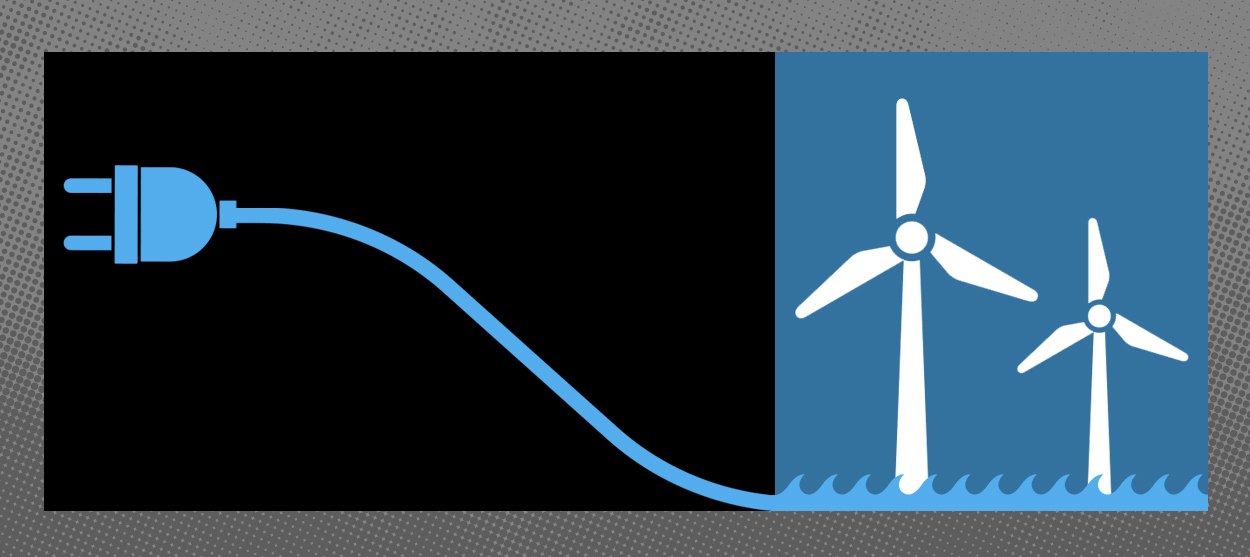The immense untapped potential of offshore wind
President Biden is on the right track, but he needs to aim higher


President Biden is proposing a big build-out of offshore wind power. The White House released a plan calling for 30 gigawatts of new wind capacity by 2030, starting with a big project between Long Island and New Jersey. The idea is to create jobs, expand U.S. steel and wind turbine production, and eventually put America on course for 100 gigawatts of offshore wind by 2050.
This step is long overdue — the U.S. is far behind many European countries and China in offshore wind capacity. In fact, if anything Biden's plan is not nearly aggressive enough. There is simply no way around the need for a truly massive expansion of offshore wind power.
A bit of background: America does have quite a lot of wind capacity installed already. Thanks to steady reductions in the cost of the resulting power, states across the country have been throwing up wind turbines by the thousands. Last year saw the biggest amount of wind power capacity added in American history, at 14.2 gigawatts (making for a total of 118 gigawatts). Utility-scale wind farms produced 338 billion kilowatt-hours of electricity in 2020, or about 8 percent of the utility-scale total (up from less than 1 percent in 1990). Iowa gets fully 58 percent of its electricity from wind, while Kansas gets 43 percent.
The Week
Escape your echo chamber. Get the facts behind the news, plus analysis from multiple perspectives.

Sign up for The Week's Free Newsletters
From our morning news briefing to a weekly Good News Newsletter, get the best of The Week delivered directly to your inbox.
From our morning news briefing to a weekly Good News Newsletter, get the best of The Week delivered directly to your inbox.
But almost all of those turbines are on land. The U.S. has just two small offshore wind farms, with a piddling 42 megawatts of capacity put together (or about 0.04 percent of the total), though several more are being planned.
This must change. Offshore is an ideal location for wind turbines, for two reasons. First, land is scarce, particularly in and around cities where power is most needed. As the White House plan points out, the proposed New York Bight wind energy area will be quite close to the New York City metro area, the biggest concentration of people in the country. Second, wind tends to blow harder and more steadily offshore (and more so the further one gets from land), which counteracts the biggest weakness of wind — that it doesn't produce in calm conditions. The land of the Eastern Seaboard is relatively calm, but just offshore wind speeds increase dramatically.
Several European countries have taken advantage of these facts to harvest huge amounts of power from ocean breezes. The U.K. now gets about a quarter of its power from wind, and about 43 percent of that from offshore (making it the biggest offshore wind producer in the world). Germany also gets about a quarter of its power from wind, of which about 20 percent comes from offshore. Denmark gets about half of its power from wind, of which about 27 percent comes from offshore. (Denmark is also planning to build a wind island in the North Sea that will eventually have 10 megawatts of turbines, or almost six times its current offshore capacity.)
In 2016, the Department of Energy estimated the "technical resource potential" of offshore wind — the maximum possible power we might generate assuming that turbines can't be built where wind is weak, or in deep waters in the Great Lakes, or where the ocean seabed is more than 1,000 feet deep — and calculated 2,000 gigawatts of potential capacity, for 7,200 terawatt-hours of actual electricity produced. That's nearly twice as much power as the entire country produced in 2020.
A free daily email with the biggest news stories of the day – and the best features from TheWeek.com
Courtesy of National Renewable Energy Laboratory
Of course, it would be impractical to actually hit that maximum. But I see no reason not to shoot for, say, 10 percent of that figure over the next couple decades, instead of Biden's modest 30 gigawatt goal. Indeed, that is barely more than the 24 gigawatts of projects that are already in the planning stage. In particular, the Pacific coastline from southern Oregon to northern California, and the big continental shelf between Boston and Nova Scotia, are absolutely perfect for some huge offshore farms. (Logically we ought to collaborate with Canada on the latter area since the shelf extends into its territorial waters.) That would give us 200 gigawatts of new wind, replacing perhaps 15-20 percent of the current carbon power supply.
Now, there are some downsides to offshore wind. The installations are relatively more expensive to build and maintain, especially far offshore. They can also disrupt the sea environment somewhat, and can interfere with the fishing industry (especially because power companies naturally don't want boats anywhere near their turbines). Turbines also sometimes spark backlash from wealthy NIMBYs, who view them as an eyesore.
But the benefits clearly outweigh the costs. Construction and maintenance costs are dropping steadily as technology improves. Environmental impacts, while regrettable, are far, far less damaging than the equivalent amount of coal or gas power. There is also no reason in principle that sustainable fishing couldn't be largely accommodated around wind farms, as a recent study outlined, since after all they are just big stationary towers. The NIMBY perspective I find frankly baffling — wind farms look graceful and elegant to me — but much of the best territory for farms can't be seen from the coastline anyway.
To deal with climate change, America is going to need to every scrap of renewable power we can build. Offshore wind can't do the whole job by itself. But it has to be a big part of the climate policy package.
Ryan Cooper is a national correspondent at TheWeek.com. His work has appeared in the Washington Monthly, The New Republic, and the Washington Post.
-
 Will there be peace before Christmas in Ukraine?
Will there be peace before Christmas in Ukraine?Today's Big Question Discussions over the weekend could see a unified set of proposals from EU, UK and US to present to Moscow
-
 Quiz of The Week: 6 – 12 December
Quiz of The Week: 6 – 12 DecemberQuiz Have you been paying attention to The Week’s news?
-
 The week’s best photos
The week’s best photosIn Pictures A man's best friend, the elephants in the room, and more
